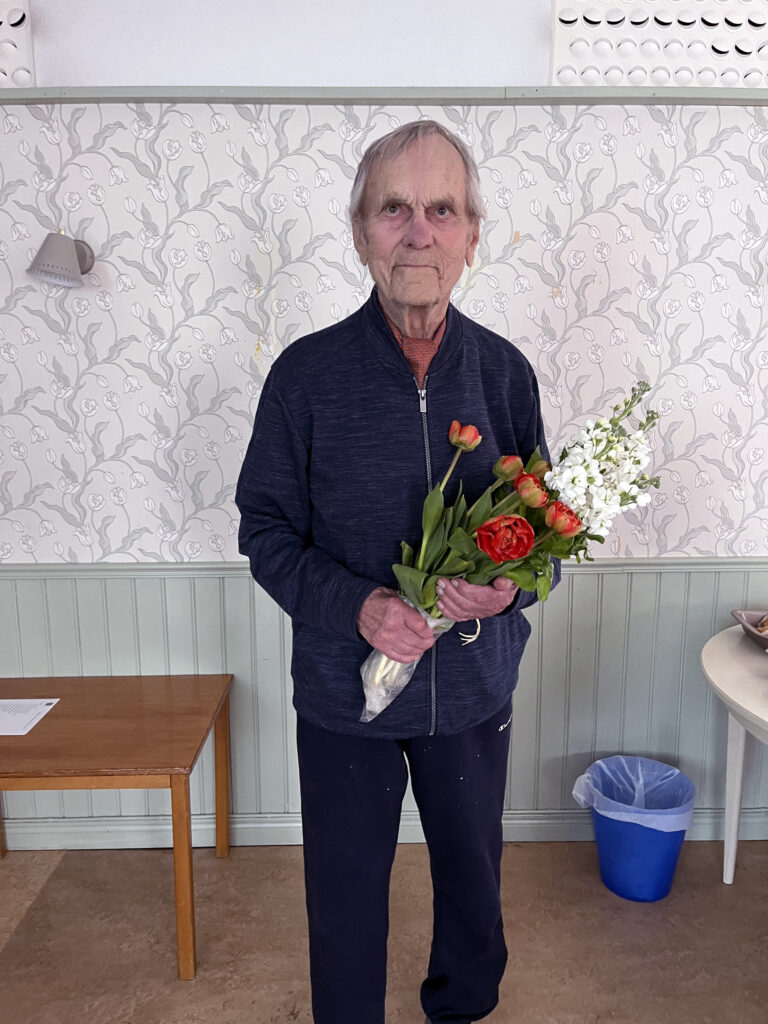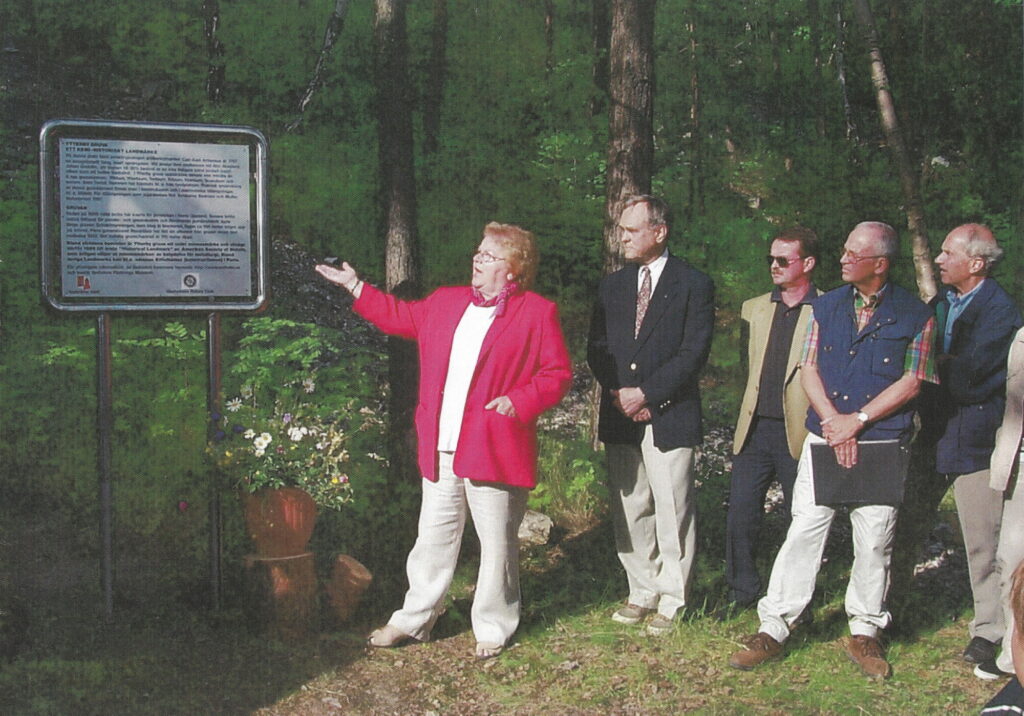Pontus Holmström was born in Finland, in Dickursby, which is located on the main line three miles north of Helsinki. After completing military service in the artillery, he studied at the Helsinki University of Technology, Department of Chemical Engineering. There he had as a professor of inorganic chemistry Olavi Erämetsä, who was very involved in rare earth metals – he was the one who in 1965 succeeded in isolating a new element from nuclear waste, promethium, which had previously been calculated to exist.

Through his studies, Pontus knew that the Ytterby mine was on Resarö when he moved to Vaxholm in 1973. The mine had always belonged to Österåker municipality, but after the ten-year merger between Österåker and Vaxholm was dissolved in 1983, Resarö was transferred to Vaxholm municipality.
An organization – Stockholm Information Center – contacted Vaxholm municipality in the late 1990s and urged the municipality to make the world-famous mine visible as an interesting tourist attraction. Anne Losman Flood, who was then the chairman of the municipal council, took the matter to her Rotary club in Vaxholm and wondered if perhaps the club could get involved in the whole thing. Pontus immediately volunteered and took up the matter.
His own company Stainless Engineering AB had a cooperation partner in Sollentuna, AB Sweflow, and when he visited them once, he saw in a scrap heap a pipe sign with their advertisement on it. He asked if he could have it, and was given permission to take it with him. He arranged for it to be supplemented with a stainless plate, which Vaxholm municipality promised to install. Pontus himself formulated the text that would appear on the sign and another member of the Rotary Club, an Englishman named Peter Jones, translated it all into English. The municipality paid for the embossing of the plaque and had it installed, and towards the end of the summer of 2000 it was dedicated by Anne Losman Flood in the presence of the Rotary Club members. This was the first measure to make the mine visible to the public.

A Rotary Club in Mynämäki, near Turku, contacted Vaxholm’s Rotary Club in 2011 and asked if it could help get a larger stone block from Ytterby mine sent to them. The intention was to exhibit it as a commemorative symbol of the town’s great personality, Johan Gadolin, who lived on the Maunula family farm there for a quarter of a century. (It was Professor Gadolin’s analysis of a rock from the mine that led to the discovery of so many new elements.)
Pontus got involved in the matter and managed to get permission from the County Administrative Board to remove a stone from the nature reserve. It was transported to Turku and placed with engraved text near the cemetery where Professor Gadolin is buried. Pontus traveled there and was present when the stone was inaugurated in the summer of 2011. Pontus, was very involved in the continued visibility of the mine and for several years wrote letters to the Nobel Committee with the aim that they should take into account that the Nobel laureates in chemistry would certainly be interested in visiting the mine while they were in Stockholm. He never received any reply to these letters!
A Japanese journalist, who was covering the award ceremony in Stockholm, called Vaxholm municipality in autumn 2010 and asked if they could arrange a guided tour for Dr. Ei-ichi Negishi, who wanted so badly to visit the famous mine in connection with his coming to Stockholm for to receive his Nobel Prize. There was no one in the municipality who knew anything about the mine, but they remembered Pontus and referred the journalist to him.
This led to Pontus organizing a visit on December 12, 2010. He asked a couple of Rotary comrades to help with snow shoveling up in the mining area, and asked state geologist Erik Jonsson at SGU (Swedish Geological Survey) in Uppsala to come along as a guide. He also invited the then chairman of the municipal board to participate in the visit. It was very successful. Afterwards, the chairman of the municipal board invited the group to lunch in Vaxholms Hotell, which was also very much appreciated.
Pontus himself and the two Rotary members who participated in the visit thought it was embarrassing that the Nobel laureate had to trudge down on his bum in the snow to reach the rock wall. (He himself just thought it was funny!) It led to a new project in the Rotary Club – they wanted to have a staircase built up to the mining area. It became a reality in 2013 and has made it significantly easier to get up to the various parts of the mining area from the road below.
Another interesting detail is that the last mine bailiff, Carl Axel Jansson, had collected various smaller stones from the mine and assembled them in a pyramid shape. His relatives noticed Pontus’ interest, and presented the pyramid to him as a gift for the mine. It can now be seen in the little red house, the “mining bailiff’s office”, up on the mine site.
In the spring of 2015, the mine’s owner, Fortificationsverket, invited to an information evening in Vaxholm. It was announced, among other things, a. that they no longer needed the mine but were looking for someone who wanted to take responsibility for making it visible to the public. There were about 40 people who had turned up, and after the information, most of them went out to the mining area to see what it looked like there. Someone – unknown who – put forward a suggestion that perhaps they should form an association, and it was Sven-Olof Kviman who was appointed on the spot to hold the whole thing together and be chairman. Pontus came along from the beginning as deputy board member. Since then, a lot of work has been done, and a foundation has been formed that is willing to take over ownership, but that’s another story.
